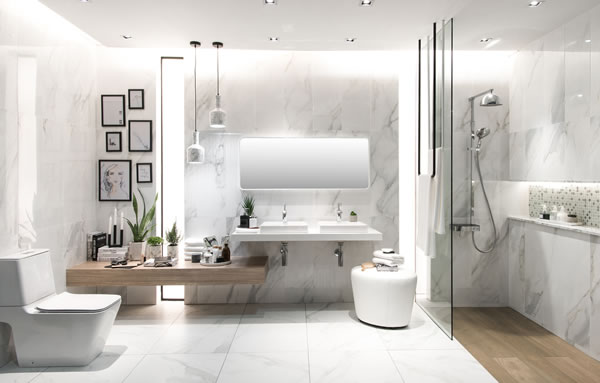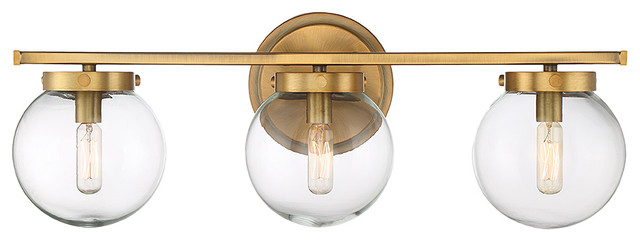Types of Bathroom Lighting Fixtures
Let’s first explore the various bathroom lighting fixtures, including vanity lights, recessed lighting, sconces, and pendant lights. By the end, you’ll have the knowledge to choose the perfect fixtures for your bathroom style and size.
-
Vanity Lights: Vanity lights are a popular choice for bathroom lighting, as they provide ample illumination for grooming tasks. These fixtures are typically installed above the bathroom mirror or on either side. They come in a variety of styles, from sleek and modern to vintage-inspired designs. Vanity lights offer focused, even lighting that eliminates shadows on the face, making them ideal for applying makeup or shaving.
-
Recessed Lighting: For a clean and minimalist look, recessed lighting is an excellent option. These fixtures are installed directly into the ceiling, providing a sleek and unobtrusive lighting solution. Recessed lights distribute light evenly throughout the bathroom, creating a bright and inviting space. They are perfect for small bathrooms or those with low ceilings, as they don’t take up valuable space.
-
Sconces: Sconces are wall-mounted fixtures that add a touch of elegance and style to any bathroom. They are available in various designs, including traditional, modern, and industrial. Sconces provide a soft, ambient glow, making them ideal for creating a relaxing and spa-like atmosphere. They can be installed on either side of the bathroom mirror or in other strategic locations to enhance the overall lighting scheme.
-
Pendant Lights: If you’re looking to make a statement with your bathroom lighting, pendant lights are a great choice. These hanging fixtures come in a range of sizes and styles, from small and delicate to bold and dramatic. Pendant lights add a decorative element to the bathroom while providing focused illumination. They are often used above a freestanding bathtub or as a centerpiece in larger bathrooms, creating a visual focal point.

Choosing the Right Bulbs
To achieve the perfect bathroom lighting, selecting the right bulbs is just as important as choosing the fixtures themselves. The type of bulbs you choose can significantly impact the ambiance, functionality, and energy efficiency of your bathroom.
-
Different Bulb Types: Understanding the different types of bulbs available is the first step in choosing the right ones for your bathroom. LED, incandescent, and halogen bulbs are the most common options. LED bulbs are highly energy-efficient, consume less power, and have a longer lifespan compared to traditional incandescent bulbs. Halogen bulbs produce a bright and crisp light but have a shorter lifespan. Incandescent bulbs are the least energy-efficient option and are being phased out in many places. Considering factors such as cost, energy efficiency, and the desired lighting effect will help you determine the best bulb type for your bathroom.
-
Color Temperature: Color temperature refers to the warmth or coolness of the light emitted by a bulb, measured in Kelvin (K). Understanding color temperature is crucial in creating the desired ambiance in your bathroom. Lower Kelvin temperatures (2700K-3000K) produce warm, yellowish light, ideal for creating a cozy and relaxing atmosphere. Higher Kelvin temperatures (4000K-5000K) emit a cool, bluish light, which is perfect for task-oriented activities like applying makeup or shaving. Consider using bulbs with a color temperature that complements the overall mood and functionality you want to achieve in your bathroom.
-
Brightness Levels: Determining the appropriate brightness level for your bathroom lighting is essential for both functionality and aesthetics. The brightness of a bulb is measured in lumens. Aim for a brightness level of around 4,000-6,000 lumens for general bathroom lighting. Vanity areas may require additional task lighting, typically around 1,500-3,000 lumens. It’s important to strike a balance between providing sufficient illumination and avoiding overly harsh or dim lighting. Consider using dimmable bulbs or installing dimmer switches to have control over the brightness levels, allowing you to create the perfect ambiance for any situation.
-
Energy Efficiency: Energy efficiency is a crucial consideration when selecting bulbs for your bathroom. LED bulbs are the most energy-efficient option available, consuming significantly less energy compared to other types. They last longer, reducing the frequency of bulb replacements and saving you money in the long run. Additionally, LED bulbs produce less heat, making them a safer choice for bathroom lighting. By opting for energy-efficient bulbs, you not only reduce your environmental footprint but also lower your electricity bills.

Bathroom Lighting Design Tips
Below I share my practical tips for designing a well-lit bathroom, including techniques for layered lighting, the importance of proper lighting placement, and the role of dimmers in enhancing the bathroom atmosphere.
Layered Lighting
Creating layered lighting in your bathroom is key to achieving the perfect balance of functionality and aesthetics. Start by incorporating task lighting around the vanity area, such as wall-mounted sconces or pendant lights. Task lighting provides focused illumination for activities like applying makeup or shaving. Additionally, include ambient lighting, such as recessed ceiling lights or a central fixture, to provide overall illumination in the space. Finally, don’t forget accent lighting to highlight specific areas or features, such as artwork, architectural elements, or a beautiful bathtub. By combining these three layers of lighting, you can create a well-lit bathroom with depth and visual interest.
Proper Lighting Placement
Proper lighting placement is crucial for maximizing functionality and ensuring a visually appealing bathroom. When it comes to vanity lighting, mount fixtures at eye level on either side of the mirror to eliminate shadows on the face. If space allows, consider installing additional lighting above the mirror for even illumination. For ambient lighting, strategically place recessed ceiling lights to provide uniform brightness throughout the bathroom. When it comes to accent lighting, experiment with placing fixtures to highlight specific areas or architectural details. Remember, the key is to achieve a balanced distribution of light that enhances the overall atmosphere and functionality of the space.
The Role of Dimmers
Dimmers play a significant role in enhancing the bathroom atmosphere and allowing you to adjust the lighting to suit different needs and moods. Installing dimmer switches for your bathroom lighting fixtures provides flexibility in controlling the brightness levels. Lowering the lights creates a calming and relaxing atmosphere for a luxurious bath while increasing the brightness is ideal for getting ready in the morning. Dimmers also help save energy by reducing the wattage used when full brightness is not required. Consider incorporating dimmers into your bathroom lighting design to create a versatile and personalized lighting experience.
Consider Natural Lighting
Don’t forget to take advantage of natural lighting if your bathroom has windows or skylights. Natural light can create a refreshing and uplifting ambiance, making your bathroom feel more spacious and inviting. Consider using sheer curtains or frosted glass to allow natural light while maintaining privacy. Additionally, position mirrors strategically to reflect natural light and maximize its effect in the space. Natural lighting, combined with well-planned artificial lighting, can create a harmonious and well-lit bathroom.
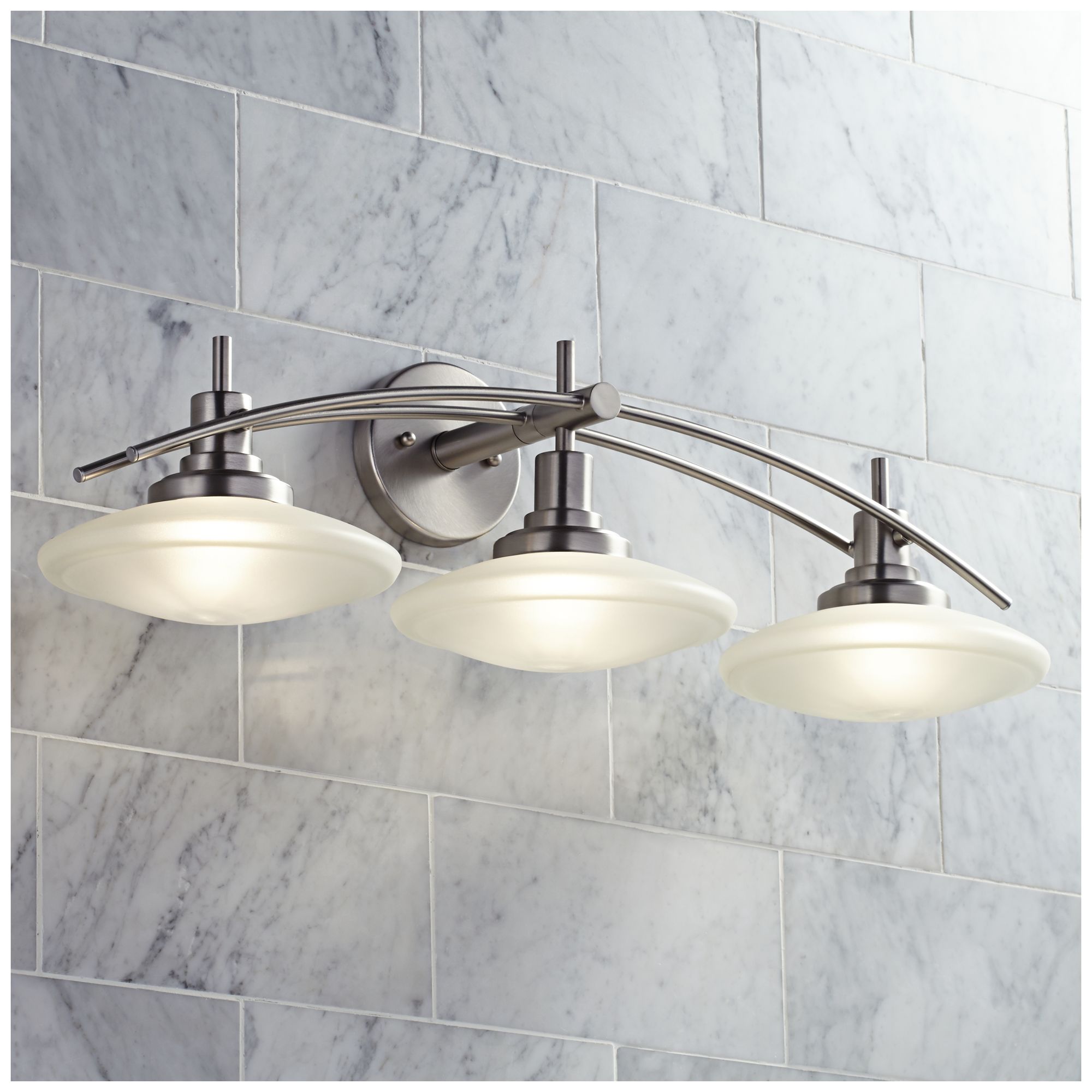
Trends in Bathroom Lighting
Below are some of the exciting trends in bathroom lighting, from emerging design styles to technological advancements that are transforming the way we illuminate our bathrooms.
Embracing Design Styles
The world of design offers endless possibilities when it comes to bathroom lighting. One emerging trend is the industrial style, characterized by exposed bulbs, metal finishes, and raw materials. This style adds a touch of edginess and urban charm to your bathroom. On the other hand, the minimalist approach focuses on clean lines, simplicity, and a less-is-more philosophy. Incorporating sleek, understated fixtures can create a sense of calm and serenity. Vintage-inspired lighting is also making a comeback, with retro-inspired fixtures adding a nostalgic touch to your bathroom. Embracing these design styles can give your bathroom a distinct and modern look.
Technological Advancements
Technological advancements have revolutionized the way we light our bathrooms. Smart lighting systems have become popular, allowing you to control your bathroom lighting through your smartphone or voice activation. These systems offer customizable settings, such as adjusting brightness levels or changing the color temperature to suit your mood. Motion sensors have also become increasingly common, automatically turning on the lights when you enter the bathroom and saving energy when the space is unoccupied. Another exciting advancement is color-changing lighting options, which allow you to experiment with different hues and create various atmospheres in your bathroom. These technological advancements not only enhance convenience but also add a touch of innovation to your bathroom lighting design.
Innovative Fixtures
In addition to design styles and technological advancements, innovative fixtures are making waves in the world of bathroom lighting. Unique and eye-catching fixtures, such as geometric shapes or sculptural designs, can become statement pieces in your bathroom. Pendant lights are no longer limited to the dining room; they are now being used to add a touch of elegance and drama to bathrooms. Floating vanity lights, where the fixtures appear to be suspended in mid-air, create a sense of weightlessness and modernity. Incorporating these innovative fixtures can elevate the overall look and feel of your bathroom.
Energy Efficiency
As sustainability becomes increasingly important, energy-efficient lighting options are gaining popularity. LED lighting is a cost-effective and energy-saving choice, as it consumes less energy and has a longer lifespan compared to traditional bulbs. LED bulbs are available in various styles and colors, allowing you to create the desired ambiance while reducing your carbon footprint. Dimmers and timers are also great energy-saving options, allowing you to control the brightness and duration of your bathroom lighting.
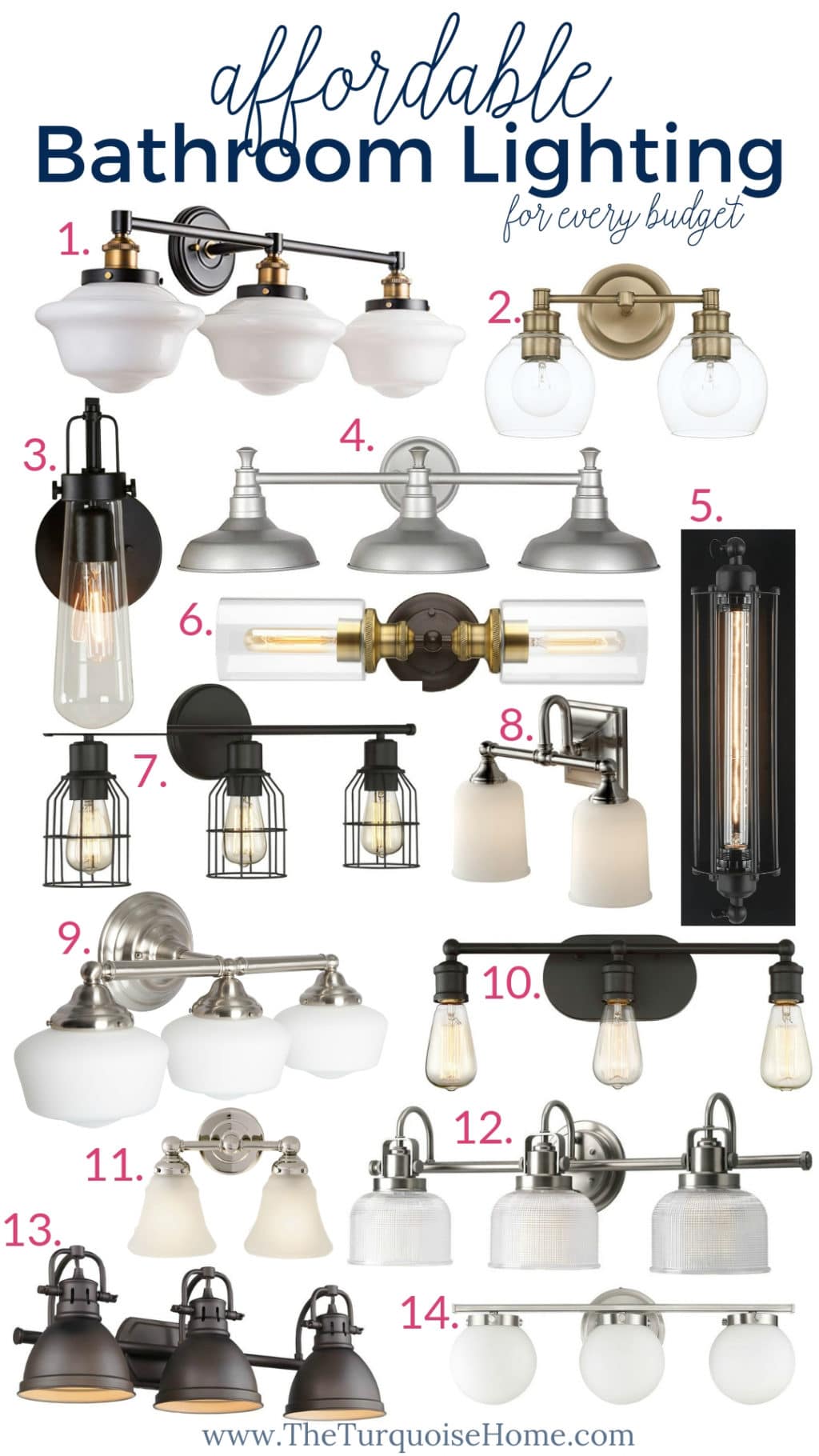
Upgrading Bathroom Lighting
Let me guide you through the process of upgrading your existing bathroom lighting. From replacing outdated fixtures to rewiring for better functionality, I’ll provide step-by-step instructions and budget-friendly tips for achieving a refreshed lighting design without major renovations.
Assess Your Current Lighting
The first step in upgrading your bathroom lighting is to assess your current setup. Take note of the fixtures, their condition, and the overall lighting quality in your bathroom. Determine which areas need improvement and identify the specific changes you want to make. This assessment will help you plan your lighting upgrade effectively.
Replace Outdated Fixtures
One of the easiest ways to upgrade your bathroom lighting is by replacing outdated fixtures. Start by removing the existing fixtures carefully. Ensure the power is turned off before disconnecting any electrical wires. Once removed, select new fixtures that align with your desired aesthetic and functionality. Consider factors such as the size, style, and finish of the fixtures. Installing the new fixtures is usually a straightforward process, following the manufacturer’s instructions. However, if you’re unsure, consult an electrician for assistance.
Rewire for Better Functionality
If you find that your current electrical wiring doesn’t meet your desired lighting needs, rewiring may be necessary. This step is more involved and may require the assistance of a professional electrician. Rewiring allows you to add additional lighting options, such as new switches, dimmers, or additional circuits. By rewiring, you can have better control over the lighting in your bathroom and create a more customized and functional space.
Incorporate New Lighting Solutions
Consider incorporating new lighting solutions to enhance the overall lighting design in your bathroom. For example, adding task lighting near the vanity can improve visibility for grooming tasks. Installing recessed lighting in the shower area can provide even illumination. You can also consider accent lighting to highlight specific areas or architectural features. Explore various lighting options, such as sconces, pendant lights, or LED strips, to achieve the desired ambiance and functionality.
Budget-Friendly Tips
If you’re on a budget, there are several ways to upgrade your bathroom lighting without breaking the bank. Consider repainting the walls with light colors to reflect more light and brighten up the space. Adding mirrors strategically can also amplify the lighting in the room. Utilize affordable lighting fixtures such as LED bulbs, which are energy-efficient and have a longer lifespan. Additionally, explore second-hand or thrift stores for unique lighting fixtures that can add character to your bathroom without a hefty price tag.

Bathroom u0026 Wall Lighting
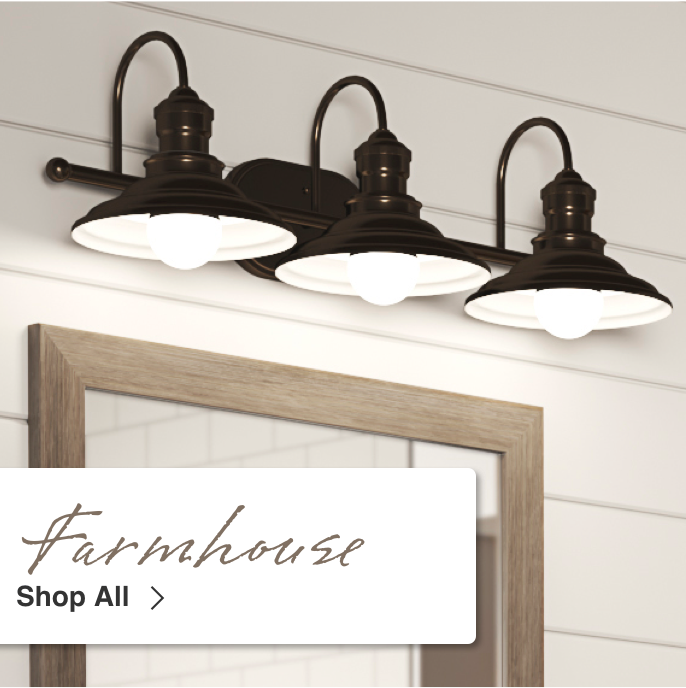
Bathroom Vanity Lighting – Light Fixtures

Farmhouse Style Bathroom Light Fixtures – Liz Marie Blog

Different Types of Bathroom Light Fixtures

Bathroom Lighting Fixtures
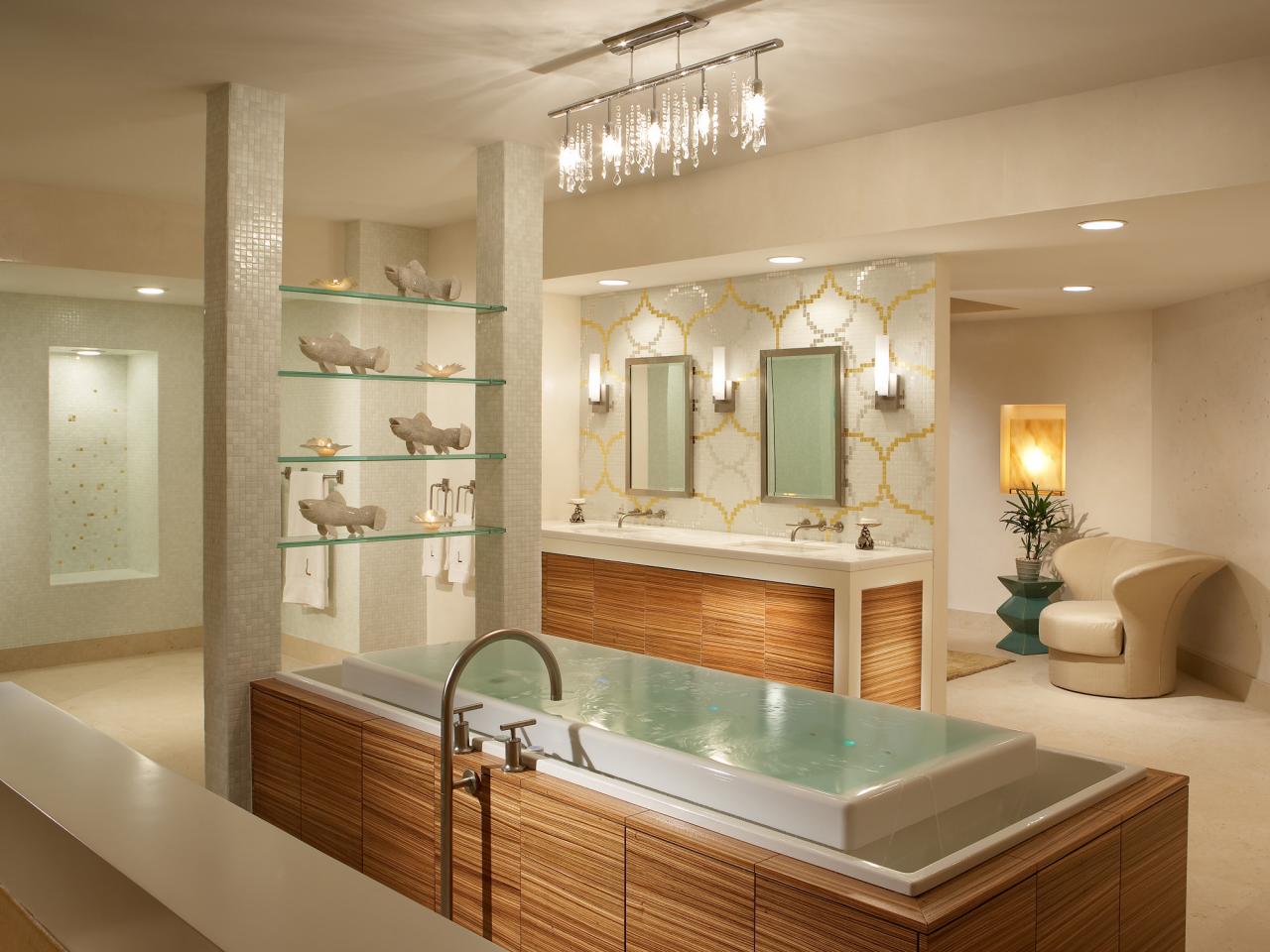
Bathroom Vanity Lighting – Light Fixtures
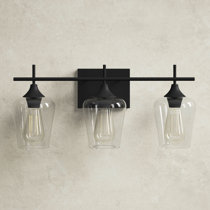
SOLFART 3 Head Vintage Bath Vanity Light Wall Bathroom Over Mirror Modern Glass Shade Light Fixtures (3 Lights-Exclude Bulb)u2026
 Related Posts:
Related Posts:
- Nutone Bathroom Light Fan
- Compact Fluorescent Bathroom Lighting
- Bathroom Light Fixture With Heater
- Farmhouse Style Bathroom Light Fixtures
- Modern Rustic Bathroom Lighting
- Replacing A Bathroom Light Fixture
- Square Led Bathroom Lights
- Bathroom Light Fitting Instructions
- Kashimo Over Mirror Bathroom Light
- How To Install Bathroom Light Fixture Junction Box
